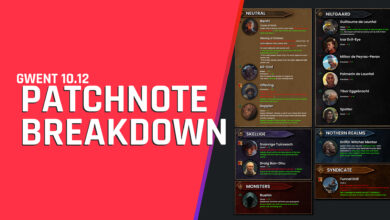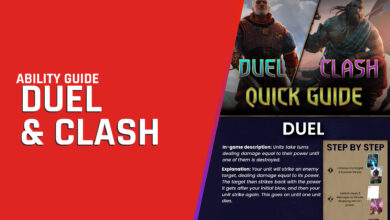Tech choices
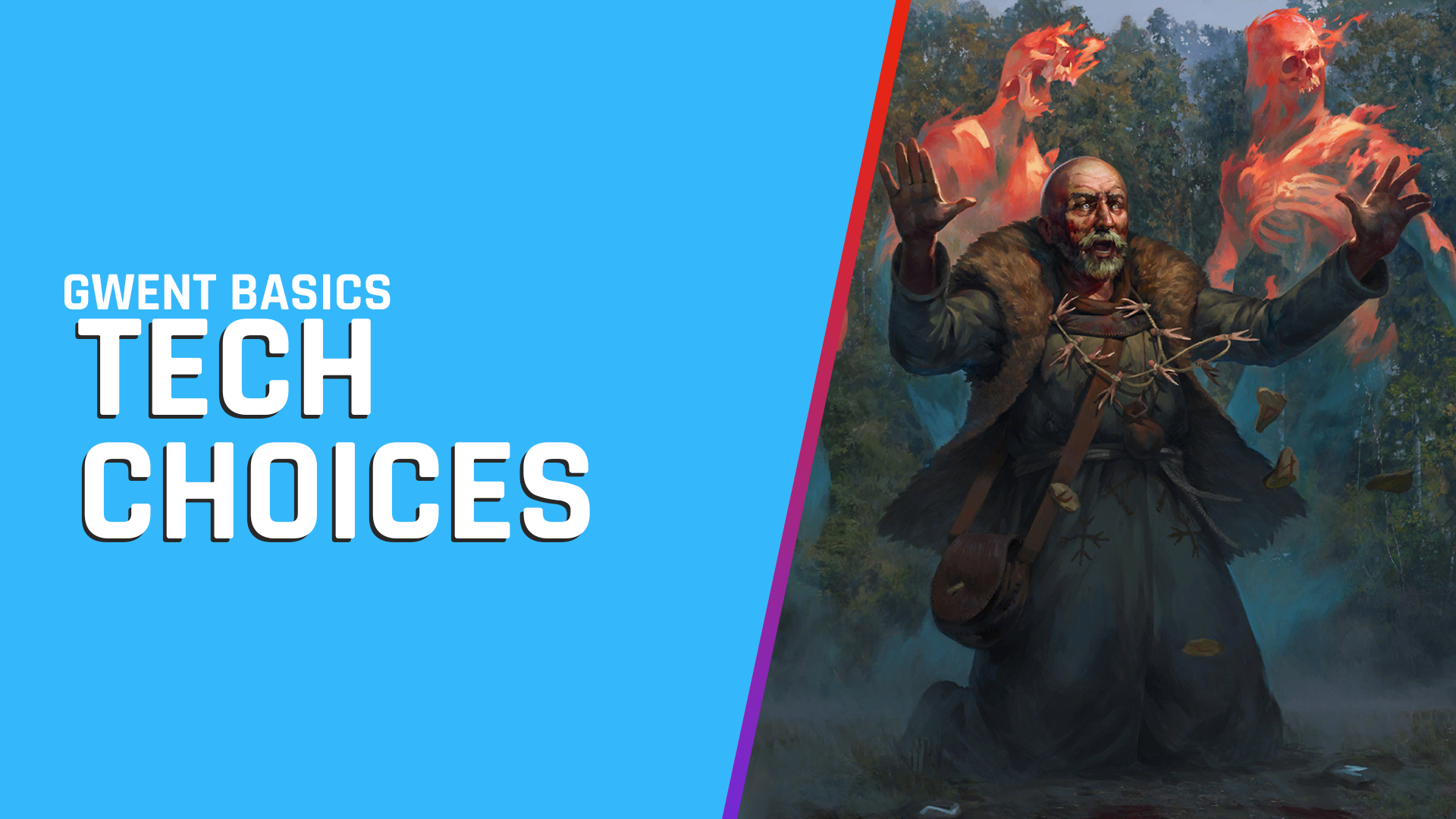
Tech card (hereinafter “tech”) is the card that is neither really synergetic with an entire deck nor generally useful, but can find good value in specific situation. Mainly we put techs in the deck to target some cards or decks which are prevalent in the meta.
In this article, we’ll introduce types of tech cards and how to use them.
Purify
Purify means ‘remove all statuses of a unit’, and is probably one of the most used techs in the game. In general we can classify purifies into two types : Offensive purify and defensive purify.
Offensive purify means a purify that is used on enemy units’ good statuses – resilience, defender, veil, good infusions (e.g. the one from Bronwen), etc. If there are a lot of decks that make use of those good statuses in the meta, offensive purify might be useful.
On the other hand, defensive purify means a purify that is used on our units’ bad statuses – lock, poison, rupture, bad infusions (e.g. Eternal Eclipse Initiate’s infusion), etc. If your deck is vulnerable to those bad infusions – for example, engine decks dislike locks – defensive purify will be good.
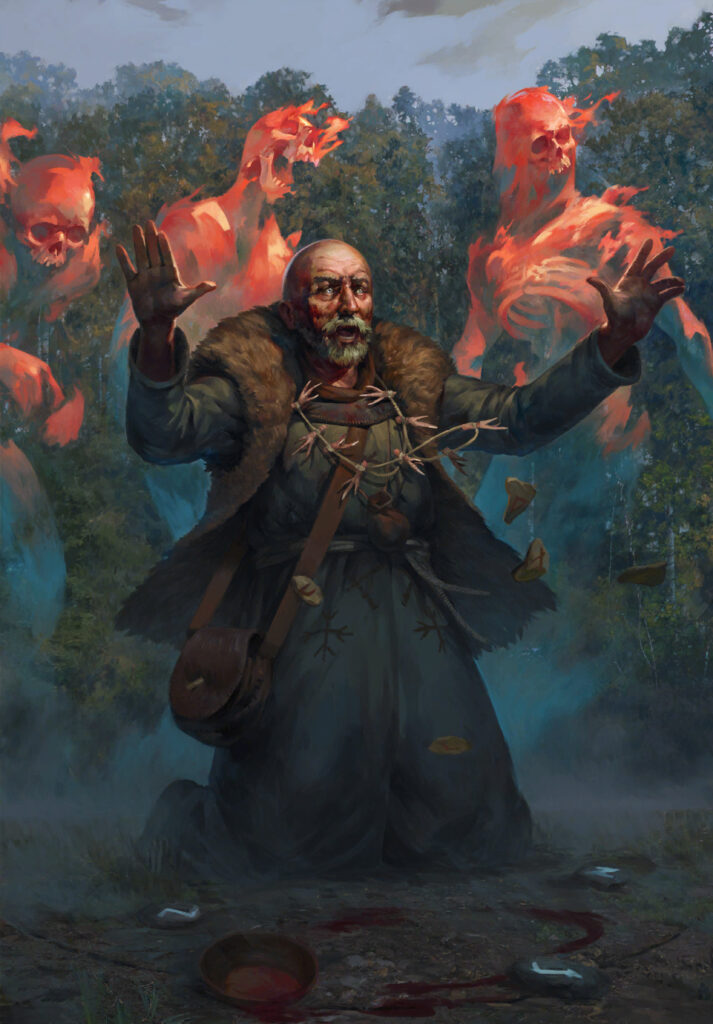
Purify cards like Pellar and 6p faction purifies can do both types of purifies. But be careful, some other can do only one of them and faction 4p purifies need to satisfy a specific condition to make use of both offensive and defensive purify.
There are also some special case of purify cards. Spring Equinox is a defensive or offensive purify that can purify the whole row – it was used in Reavers deck when Imprisonment was the most dominant deck. Tempest is a offensive purify that can purify an immune unit, and lots of players brought the card to official tournaments as a tech against Saskia or Bronwen.


Also, Mahakam Ale has an ability similar to defensive purify, but as an inferior version. It can unlock an unit, but is useless against other bad statuses.
Lock
Lock is a status that disables a unit’s abilities, including infused ones. Usually we tech lock for opponent’s engines, especially the most dangerous one. But there are also very rare occasions that we need to lock our own units. False Ciri and a unit with Initiate’s infusion are the best examples.
If there are a lot of engine decks or cards which need to be answered, Lock will be a good tech choice, especially if your deck has not enough amount of control.
Most factions have their own locks, so they might be the first consideration. But SY and MO have to consider neutral locks like Dorregaray or Aguara if you really want one since there’s no faction lock card.
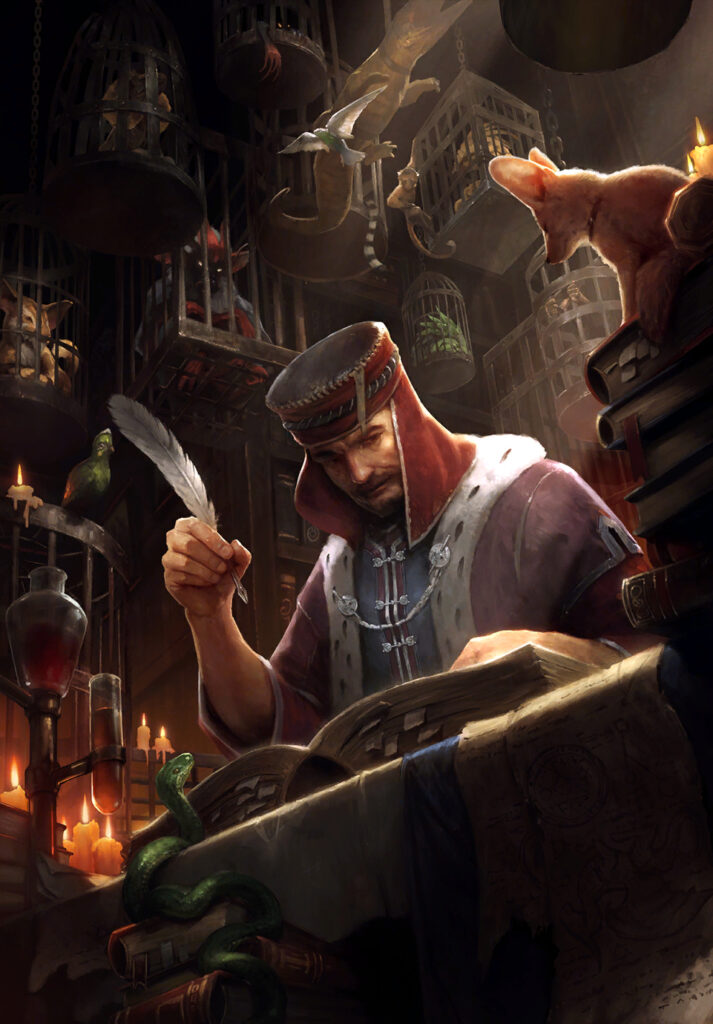
Tall punish
Tall punish means a card that can remove opponent’s tall unit (=a unit with high power). It’s useful when lots of decks like to grow tall. But against decks without tall units, it might find poor value or even bricked possibly.
Korathi Heatwave is the most popular tall punish card, since it is unconditional removal and can also deal with artifacts.

There are a lot of tall punish Geralts (Geralt of Rivia, Igni, Professional, Axii), but you need to be careful when you choose them since they can brick sometimes.
NG is the best faction in terms of tall punish – both quantitatively and qualitatively. You can easily choose between cards like Vilgefortz, Leo, and Ivar. For now, Vilge is the most popular choice.
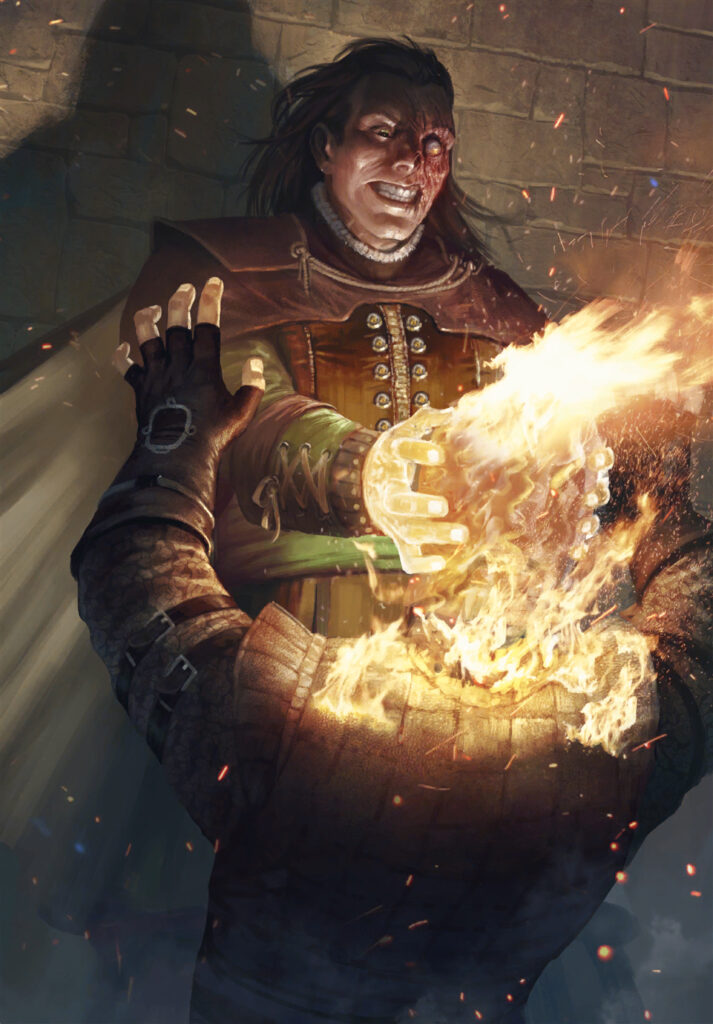

If you’re looking for cheap tall punish, there’s Spores for you. But, be careful, it is only useful against boosted tall units, so against Regis or Arnjolf Spores can’t find good value.
Poison package is also a good cheap tall punish, but only SY, ST, NG have poison cards. And usually it takes two turns to kill an enemy unit, so you cannot deal with a tall unit if opponent plays it in the last turn – unless you have double last say.
It might not be the best example of tall punish, but in this season we must mention Will O’ the Wisp. Since all of 14p new cards are doomed, Will O’ the Wisp does the same job that Heatwave does against some decks, for only 5 provisions.
Row punish
Row punish means a card that can damage all units on an opposing row or two. It is useful against swarm decks – the decks which go wide like Firesworns.
Lacerate and Stammelford’s Tremors are two basic neutral row punishes. For faction cards, there’re cards like Werecat(MO), Tinboy(SY), Crushing Trap(ST), Sabrina Glevissig(NR), etc. Recently added Svalblod, evolved Dagon and Gregory also have row punish abilities.
In this year’s October season, Surrender was the most popular row punish card. It can find crazy value against Reavers unless they play around it with locations, and was also good against Renfri NG and Sigi SY since they rowstack too.
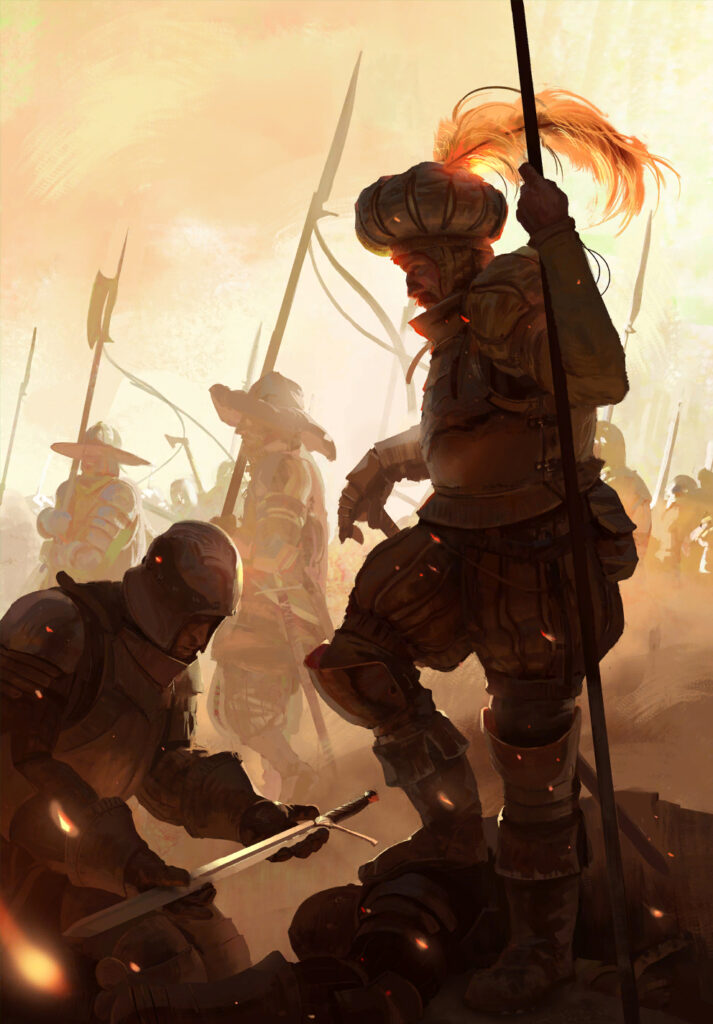
Movement
There are several row-locked (the ability is only available in one of the rows) engines in Gwent. Against those engines, movement cards can act as lock, with cheaper provisions. But that is not the only use of movement techs. If your deck has some row effects to use (e.g. Frost), movement can always find value. Also, you can move the opponent’s unit to clog one row – putting the opponent’s two Eternal Fire Disciples in one row will decrease their value from their fee. Sometimes movement can increase the value from row punish or unbrick Igni.
Movement can also be used on your own unit. When the opponent moves your row-locked engine, you can counter it with your own movement. Moving Weeping Willow after using the poison ability is also a good example.

In some situations, a single card with more than one movement ability is useful. Nivellen, which arguably had nice card art before censorship, can move 3 adjacent units and it’s really good against Reavers. Malena can move one unit every turn, and it’s a nice engine when you have Dol Blathanna Sentry on Board.
Graveyard Control
Sometimes you need to banish a card from a graveyard. Banishing echo cards like Oneiromancy, Amphibious Assault, Hen Gaidth Sword can deny a lot of value. Also, when the opponent’s deck makes use of the card from Graveyard like SK decks and Deathwish, teching GY control is useful.
Squirrel is a commonly used GY control tech. Xavier Lemmens can banish a card from GY every turn and has 2 more power for 2 more provisions.

Experimental Remedy is a special case of GY control, which can play a unit from the opponent’s graveyard. Playing the opponent’s big SK veteran unit which reworked Draid Bon-Dhu nourished will make one more NG-rant post on Reddit.
Other situational techs
There’s also some techs that can not be easily classified.
Danirai and Kams134 surprisingly brought Tesham Mutna Sword to Masters #4, which mainly targeted Ciri: Nova. Probably the sword has some potential in this season too, because of those doomed 14p cards.
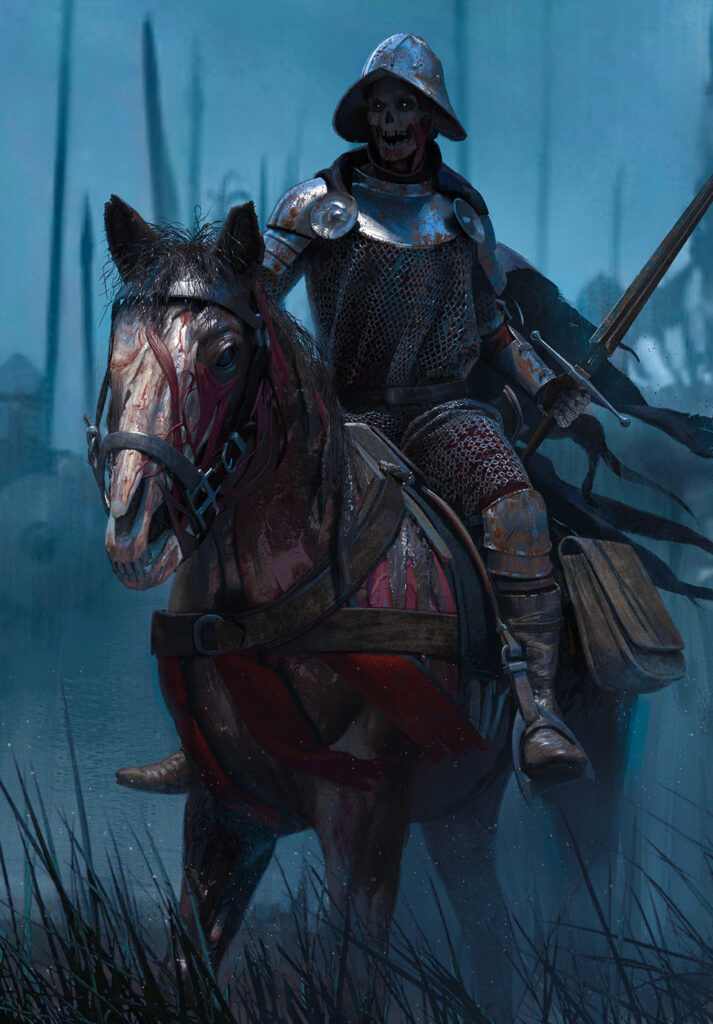
Cursed Knights is versatile tech. It can be a defensive purify against poison or some bad infusions (from Sove or Initiate), deny False Ciri, and can sometimes brick opponent’s Coup de Grace.
Fortune Teller can either give veil or doomed to a unit. Veil is very useful against poison, and doomed can do a similar role as graveyard control if used on cards like Succubus, Madoc, etc.
When there’re a lot of high-end cards with good deploy ability in the meta and your deck doesn’t has one, there is a fun and toxic tech – Ihuarraquax. Some of the Harmony players in this season played it to tech against NG (Torres, Artaud, Stefan) or SK (Fucusya, Tyr, Harald).
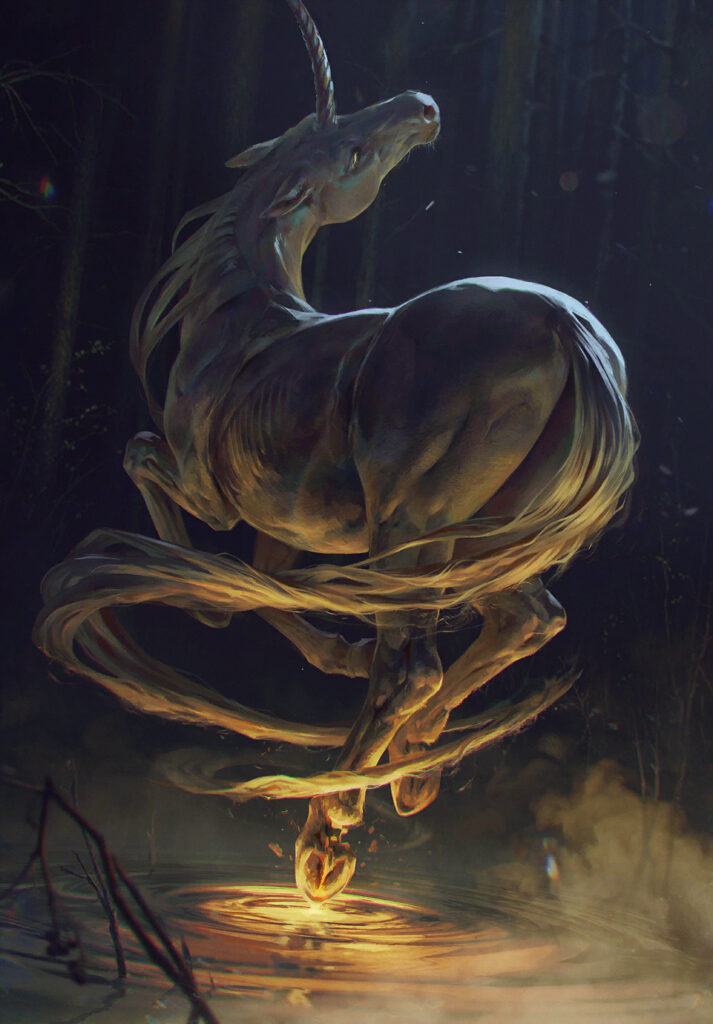
Shilard Fitz-Oesterlen was a thing when Sunset Wanderers was an auto-include card. It can also be good against decks that have a high power unit in hand – Sove, Regis, and any unit in a Handbuff deck.
There are lot more techs in the game that we didn’t mention above. Fun and necessary aspect of deckmaking in Gwent is to analyze the meta and find right tech choices to include. Hope this article helped you to get the hang of tech choices and how they work.



